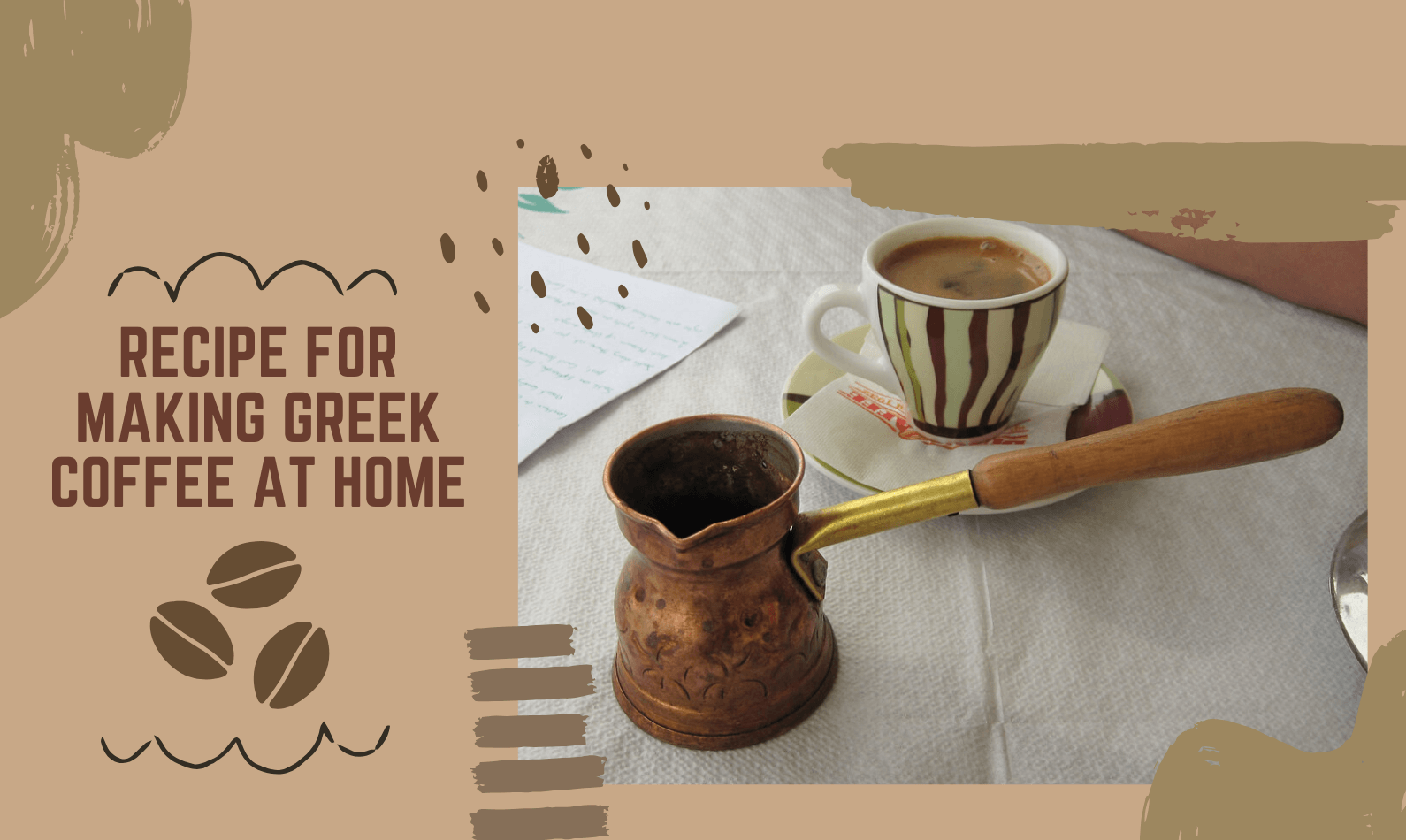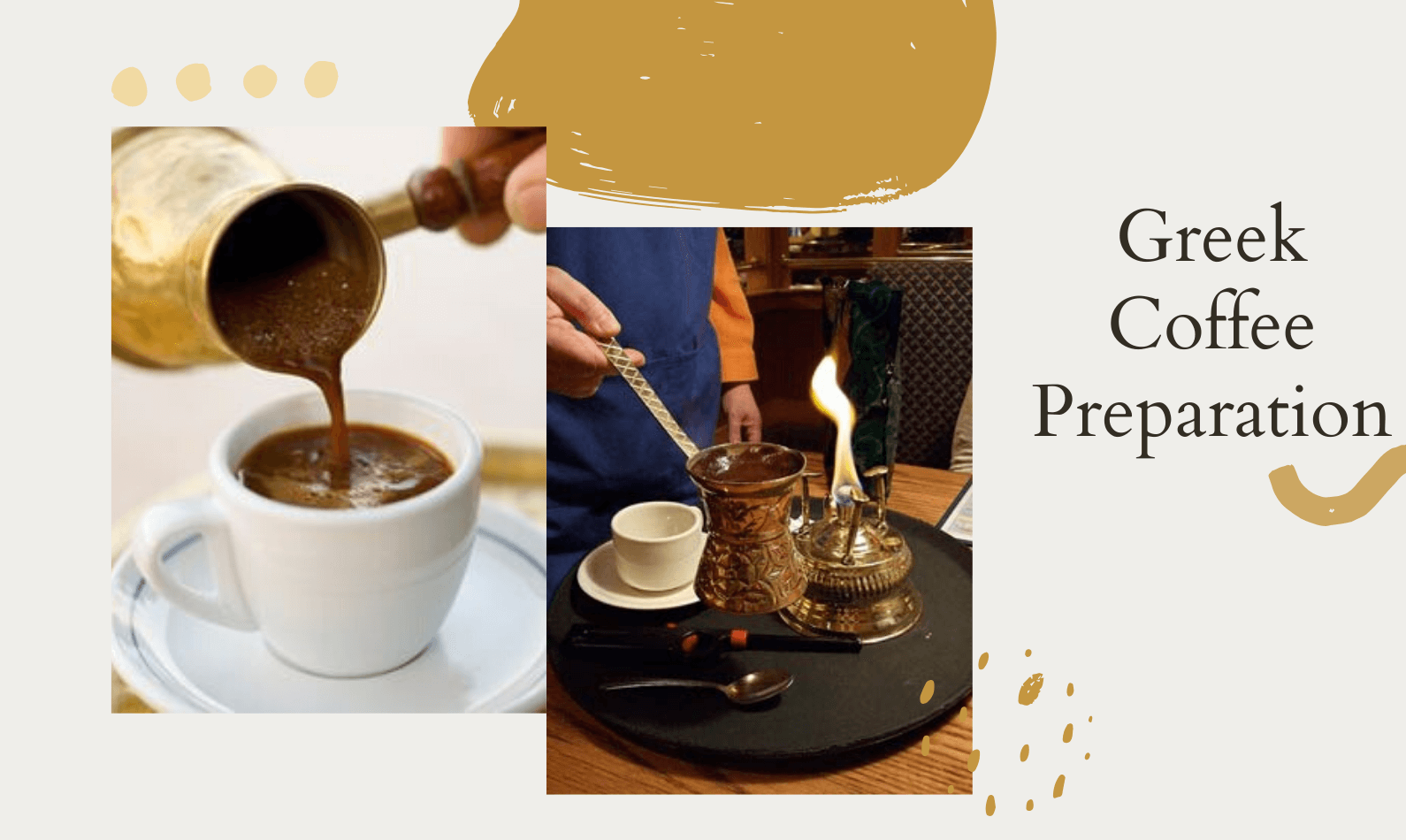How to Make Greek coffee at Home Using a Briki: Greek coffee is a strong infusion, served with foam on top and beans on the bottom of the cup. Although it can be done in a specialized pot, the small traditional pot shown here is the best. Allows the right amount of foam, which adds to the unique flavor. Coffee is usually taken seriously in Greek culture (although Greek coffee is actually a Turkish coffee type). The Greeks generally consume coffee twice a day in their culture: once in the morning and after the afternoon nap.
There are variations of this little treatment that you will need to know if you want to serve it in the true Greek way: sketos (without sugar) use a teaspoon of coffee, metrios (semi-sweet) use a teaspoon of coffee and a teaspoon of sugar, glykos (sugared) use a teaspoon of coffee and two teaspoons of sugar, and various glykos (very sugary, very strong) use two heaped teaspoons of coffee and three teaspoons of sugar. Here we will show you how to make Greek coffee at home.
Recipe for Making Greek Coffee at Home:
Items needed:
- Small saucepan, Turkish coffee pot, or briki (we’re using a briki)
- Demitasse cup
Ingredients for Making Greek Coffee at Home:
- 1/4 cup of water
- 1 teaspoon of Greek coffee (we’re using Papagalos Loumidis Greek ground coffee)
- Sugar, optional
Process for Making Greek Coffee at Home
1. Pour the water into Briki
The pot used to prepare Greek coffee is called briki. It is available in 2, 4, and 6 demitasse cups to create the right amount of foam, an essential part of the process. If you plan to prepare coffee for more than six people, it is recommended that you prepare more potatoes in several stages.
Start with icy water. Use the demitasse cup to measure the water required for each cup of coffee (a demitasse cup of water is about 1/4 cup). Pour the water into the briki.
2. Add Coffee and Sugar (If desired)
Greek coffee is made to taste, and there are four standard types. They vary according to the sweetness and quantity of coffee used. Experimenting will help you find the right beer for you.
- For an unsweetened coffee, add a full teaspoon of briki coffee. In Greek its called sketos, written σκÎτος and pronounced SKEH-tohss.
- For a medium sweet coffee, add 1 teaspoon of sugar and 1 heaped teaspoon of briki coffee and stir. In Greek its called metrios, written μÎÏ„Ïιος and pronounced MEHT-ree-ohss.
- For a sweet coffee, add 2 teaspoons of sugar and 1 heaped teaspoon of briki coffee and stir. In Greek, its called glykos or γλυκός and is pronounced ghlee-KOHSS.
- For an extra-strong sweet coffee, add 3 teaspoons of sugar and 2 full teaspoons of briki coffee and stir. In Greek, its called variable glycos (βαÏÏ Î³Î»Ï…ÎºÏŒÏ‚), pronounced vah-REE ghlee-KOHSS.
3. Let the Foam Rise
Light the medium-low heat. Stir the coffee until it dissolves, then don’t mix again. Warm-up slowly. The foam will begin to rise in the briki before it boils. This foam is called kaïmaki (καϊμάκι), pronounced Kaee-MAH-kee. The richer the foam, the more the Greeks like it.
When the foam starts to rise, lift the briki from the heat to stabilize it. Put the briki back on the heat so that the foam rises again. When the foam reaches the top of the pan, please remove it from the heat.
4. Serve and Drink
Serve hot Greek coffee with a glass of cold water for each person. You can add homemade cookies or sweet cookies for a finishing touch. This coffee is drunk, often aloud and fairly slowly. Inauthentic environments, a cup of coffee often last a few hours. Greek coffee has recently become popular among young people, who order “doubles” and often add milk (they drink even though it is faster than personalized dictates).
5. Variation
Another type of coffee is rather popular: Sweet boiled coffee (glykivrastos, γλυκήβραστος, pronounced ghlee-KEE-vrah-stohss). To prepare glykivrastos, use 1 teaspoon of coffee and 2 teaspoons of sugar per cup. Raise and lower the briki up and down the heat, boiling the coffee almost three times until it opens a lot. Be careful not to let the foam escape. Serve as you would with traditional Greek coffee.
Greek Coffee Tradition
This coffee is thought to be enjoyed slowly over a long period of time, possibly hours. It should always be served with a glass of cold water, and desserts will not be refused. Always leave the last sips containing ground coffee. Taking a strong sip is also customary and also considered rude if you don’t.
A briki also called a Turkish coffee pot, is short with a long handle. It is available in three sizes of two, four, or six cups. When preparing coffee, it is necessary to do enough according to the pot’s size; for example, for a four-cup pot, prepare four cups of coffee. It is an important factor when the foam is formed, and the Greeks love its foam!
There is usually no measurement in a Greek coffee recipe. The demitasse cup is used to measure water and a spoon to measure ground coffee. If you grind the coffee beans instead of using the ground coffee, grind them very finely.
What type of Coffee should you Use for Greek Coffee?
Many people think that if they grind their favorite beans into a fine powder and have coffee Greek. This is not the case. Apparently, there is a law in Greece that requires all Greek cafes to serve coffee. However, Starbucks serves only their own coffee blends so that their beans and ground coffee are prepared “Greek.” I can assure you that it looked like Greek coffee, but it didn’t taste like Greek coffee.
A specific combination of beans is used to create this Greek blend, with specific beans roasted at specific temperatures and used in specific proportions. If there is a place that grinds / coffee roasted Greek / Turkish / Arabic near you, get coffee from there. Otherwise, many supermarkets sell ethnic and order coffee Greek Amazon, which has 2 popular Greek brands Loumidis and Bravo.
When Coffee is more than Coffee
Greek coffee customs are intriguing and present a bit of mysticism. Part of the Greek coffee experience involves taxography, which involves reading the coffee grounds to guess. After consumption, the coffee remains in the cup. The cup is rotated, turned upside down to allow the ground to slide out, then rises, leaving shapes and patterns behind. The in-depth symbology of the shapes and motifs left in the cup is interpreted to say what awaits us.
If you’ve ever heard the phrase “pour one,” the Greeks do too. Before drinking coffee, pour some on the floor in honor of someone who has died. This tradition from ancient Greece, long before it was part of a song that made it popular in American society. Back then, it was customary to pour some liquid to honor the Olympian gods, and the deceased was honored with wine. This particular custom is popular in countries around the world.
We hope you enjoyed learning a little more about Greek coffee culture and how to prepare your Greek coffee at home. Remember to pour one and sip it slowly. You will be glad you did.
How to make Greek Coffee at Home? Conclusion
Once you have prepared your Greek coffee and want to be completely authentic, you can serve it with a glass of water and biscuits, baked goods, or other sweets!
Read more about How To Make Coffee Creamer at Home? Easy Methods
However, remember that the most important thing is to take your time, drink slowly, and have fun and others’ company.







